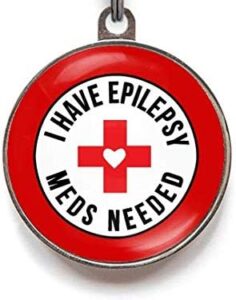What is an epileptic cat?
Under normal circumstances, the brain sends and records signals to know where you are and how your body is behaving. That way you know whether you are standing or lying down and whether you have to move your left leg or your right leg to move forward. When a cat has the disease “epilepsy”, it occasionally has epileptic seizures. This can be a few times a day or once a year and anything in between. During such an epileptic attack in your cat, the signal transmission in the brain does not go well. This is usually a very temporary event lasting about 2 to 5 minutes.
In a “standard” epileptic attack, your cat falls over, is unconscious, shakes its body and paws. They often drool (foam forming around the mouth) or lose urine or faeces. Your cat usually regain consciousness after a few minutes, although they often still appear very distracted. He is not quite himselve yet.
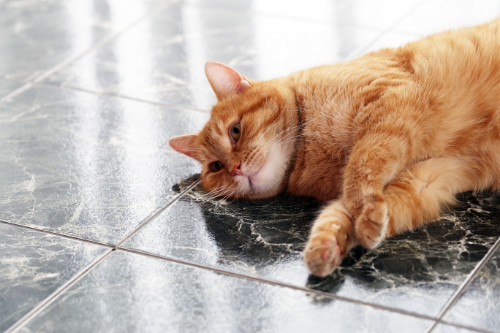
How does epilepsy in a cat happens?
There are basically two forms of feline epilepsy in cats that have different causes. Other forms also occur, but are so rare that I will not discuss them here.
Primary epilepsy
We talk about primary epilepsy (also called idiopathic epilepsy) when there are epileptic seizures without a medical reason, other than a malfunction of the brain. In principle, this form of epilepsy occurs in cats of any age. This is in contrast to primary epilepsy in dogs, which develops between six months and six years of age. Much is still unclear about this form of feline epilepsy, but it is thought that it is a congenital genetic brain defect. These epileptic seizures mainly occur when a cat is relaxed and chilling out. Epileptic seizures rarely occur during activities.
Secondary epilepsy
In secondary epilepsy, there is a medical problem elsewhere in the body that prevents the brain from working properly. Liver problems in particular often cause epileptic seizures. But certain viruses or parasitic infections can also affect brain function. And of course brain tumors or other brain problems.
Symptoms in case of an epileptic cat
How do you recognize a cat with epilepsy? In fact, most owners recognize an epileptic seizure as soon as it occurs. Of course they don’t know all the details at that time, but an epileptic seizure is not very difficult to recognize. That is, a normal epileptic seizure. Because later in this article you can also read about “partial epilepsy” where an animal does not become completely unconscious. Then it is a lot more difficult to recognize.
With a “normal” epileptic seizure in the cat, you see that the cat can initially behave a bit differently than usual. Meowing, staring into nothingness, chattering teeth, etc. Total unconsciousness can then occur quite quickly while your cat makes spastic movements with its entire body. You often feel that all the muscles are tense and therefore feel hard. contracting ever so strongly, an enormous amount of heat is made in the body.
Does an attack last longer than 5 minutes? Then it is wise to measure your cat’s body temperature if possible. Watch out for any danger to yourself. In particular, biting and scratching can be done by your cat without him being aware of it. Does he now have a temperature higher than 40.0 degrees Celsius? Then it is wise to moisten your cat’s paws and tail so that his body can cool down. You call your own vet for help if that happens and let your vet take care of your epileptic cat.
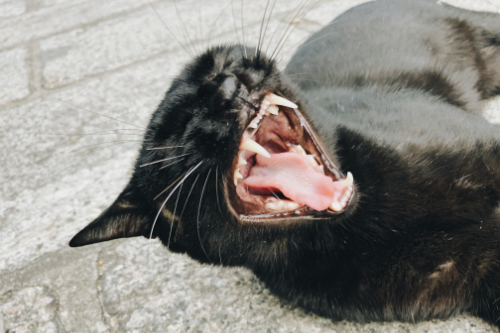
What is Partial Epilepsy?
In case of this type of epilepsy, your cat suffers from uncontrolled movements or behaviour, without being unconscious. There are certain muscles or body parts that don’t move the way your cat would like. For example, he can make deviant movements with his head, or he can walk in a very strange way in one way or another. This is because he cannot properly control the muscles of his legs. It is also possible that he temporarily exhibits strange behavior such as aggressive behaviour for no reason, walking in circles or he seems to be trying to catch flies. This often only takes a few minutes. After that, your cat will still behave a little strangely, but he will no longer have spastic features or deviant behaviour. In any case, there is no unconsciousness in partial epilepsy and the seizures therefore do not involve the entire body.
What is status epilepticus?
Very occasionally a cat does not come out of its epileptic seizure. It just keeps shaking and shaking. This can generate so much heat that your cat overheats and may die. We call it “status epilepticus” when a cat remains in a seizure for more than 30 minutes. It is therefore wise to call your vet as soon as your cat has been in a seizure for more than 5 to 10 minutes. After all, it also takes quite a long time to get to your vet. The chance that your cat will come out of its epileptic seizure after 5 to 10 minutes is smaller than that it will stay in it. So don’t take the risk. You’d rather be at your vet with a normal cat than arrive at your vet too late and have a deceased cat.
Your vet will give your epileptic cat sedatives to stop the muscles from contracting as much. In this way, less heat is produced in his body and the immediate danger has passed. Your cat can now safely take longer to wake up.
What to do in case of an epileptic seizure in your cat?
In the event that your cat has an epileptic seizure, be aware that he may bite or scratch you during his seizure. He is completely unaware of this and certainly does not do it on purpose. But you can get seriously injured. So keep this in mind when you try to help your cat!
It is important that your cat is safe during such an attack. For example, if it is in the window sill or on top of a shelf, it can fall off. So either put cushions under him on the floor, or grab a large wad of towels and take him off the windowsill or shelf and put him safely on the floor. At most, he will bite or scratch the towels and not you. In addition, make sure that he cannot bump his head against anything during his attack. Repeatedly banging your head against a wall will not help your brain normalize.
Also try to time the attack. It always looks awful and so it feels like it’s going on forever. By turning on a timer, you can therefore keep an eye on whether the 5 minutes have already passed and whether you need to call your vet for help. Some people also make a video of a seizure so they can show it to their vet later. The advantage here is that you also immediately turn on a timer.
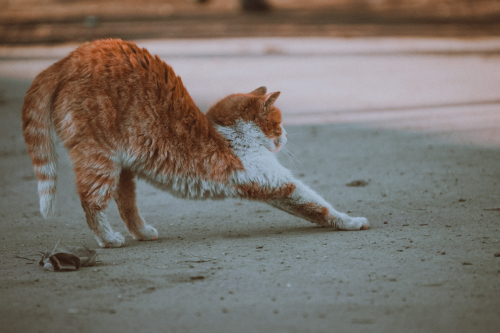
Treatment of an epileptic cat
If a cat has only had a seizure once, it is usually sufficient for your vet to physically examine your cat to see if it appears to be otherwise healthy. If the attacks are more frequent, a blood test is usually suggested to rule out any underlying medical problems. After all, at this point we do not yet know whether there is primary or secondary epilepsy. If an owner wants to do everything possible, it is also possible to have a brain scan performed (MRI or CT scan) to exclude brain tumours, cerebral haemorrhages or cerebral infarctions. But given the cost, many owners forego this. Urinalysis is also often done. And in severe cases, it can also be decided to take some cerebrospinal fluid to see if there is an abnormality.
Treatment of primary epilepsy in cats
Is there no reason to believe that there is an underlying medical problem? Then there is probably primary epilepsy and it is possible to start anti-epileptic medication. We do not cure the cat of its epilepsy, but we suppress the risk of epileptic seizures. The goal is therefore to arrive at a maximum of one attack every 6 months. If your cat has fewer seizures than one seizure every 6 months, giving him medication has no added value. After all, the liver is also put to work harder with that medication, with the result that it is subjected to a heavier load. That is worse for your cat than one epileptic attack every 6 months.
In principle, we usually prescribe Phenobarbital as an antiepileptic in cats. The starting dose is usually 1.5 to 2.5 mg/kg body weight twice a day. However, it is very different per cat how much of this phenobarbital is absorbed into the bloodstream from the intestines. And therefore also ultimately active in the brain. When the medication is given, a stable level will arise in the blood after 16 days. At that time it is advisable to have the phenobarbital level in your cat’s blood determined by means of a blood test. Based on that result, it can be determined whether he is receiving the correct dose. Or that he should receive more or less to reduce the risk of epileptic seizures.
If your cat is diagnosed with epilepsy you can best give him a tag on it’s collar which will tell other people he has epilepsy.
Treatment of secondary epilepsy in cats
In the case of secondary epilepsy, it is important that the underlying cause is resolved. For example, if there is a liver problem, you can treat the epileptic seizure, but as long as the liver continues to function poorly, the epilepsy will only get worse and not better. Not to mention the overall condition of your cat. But in most cases, medication against epilepsy in the cat is started while in the meantime it is investigated what is wrong with the liver or other organ that is not functioning properly. Depending on the underlying problem, later, when the first medical problem has been treated, you can choose to reduce the medication to see if your cat’s epilepsy stays away.
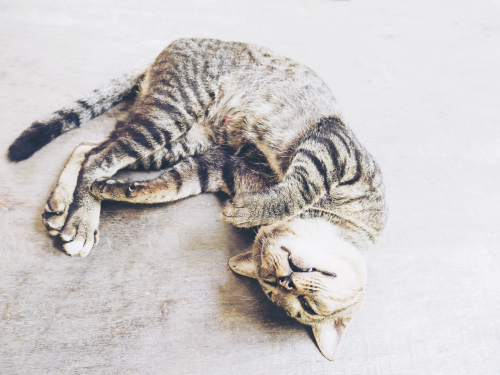
Life expectancy of an epileptic cat
With primary epilepsy, the life expectancy for your cat is generally good. He will probably still have epileptic seizures very occasionally. But due to the medication given, much less often. Unfortunately, in some cases the medication does not work properly and your cat continues to have epileptic seizures. In that case, other medicines can be tried or two types can be chosen to give at the same time. However, with every epileptic seizure there is a chance that it will become a “status epilepticus”. Without intervention from your vet, your cat will die from this. And even with intervention, in rare cases it is not possible to save a cat. Fortunately, status epilepticus is rare.
Cat epilepsy deadly?
As long as your cat does not develop “status epilepticus”, epilepsy in itself is not fatal. However, it is possible that an underlying medical problem is the cause of the epilepsy and that your cat can die from that underlying cause. The medication against epilepsy is an extra burden on the liver. Therefore there is a chance that your cat will become just a fraction less old than if it did not have to use medication. But of course this does not outweigh the quality of life that increases enormously due to the medication.
Epileptic seizure in an old cat
Unfortunately, when an old cat has an epileptic seizure, it is in most cases caused by an underlying medical problem such as liver failure or a brain tumor. In this case, it is therefore important that you contact your vet and look for the cause of your cat’s epilepsy. If you don’t want to go all the way through the medical process, you can at least ask your vet to prescribe the medication without looking for the underlying medical problem.
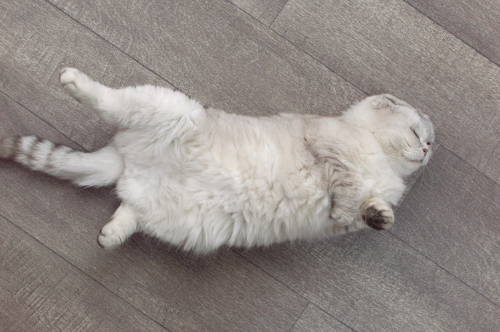
Euthanasia of an epileptic cat
When a cat suffers a lot from its epileptic seizures or if there is a serious underlying medical problem, it may sometimes be more animal-friendly to euthanase the cat. Fortunately, in general this is rarely necessary and a cat with epilepsy can still have a good life after the medication has started.
Which diseases or disorders cause symptoms that can be compared to epileptic seizures in a cat?
There are some diseases or problems that can cause similar symptoms to cat epilepsy. For example fainting due to heart failure, diabetes, narcolepsy and middle ear problems etc.
Found the answers you are looking for?
Hopefully you have found the answers you are looking for. Your cat deserves a happy and epileptic seizure free life! We wish he will have a better life soon. Good luck for both you and your cat.

